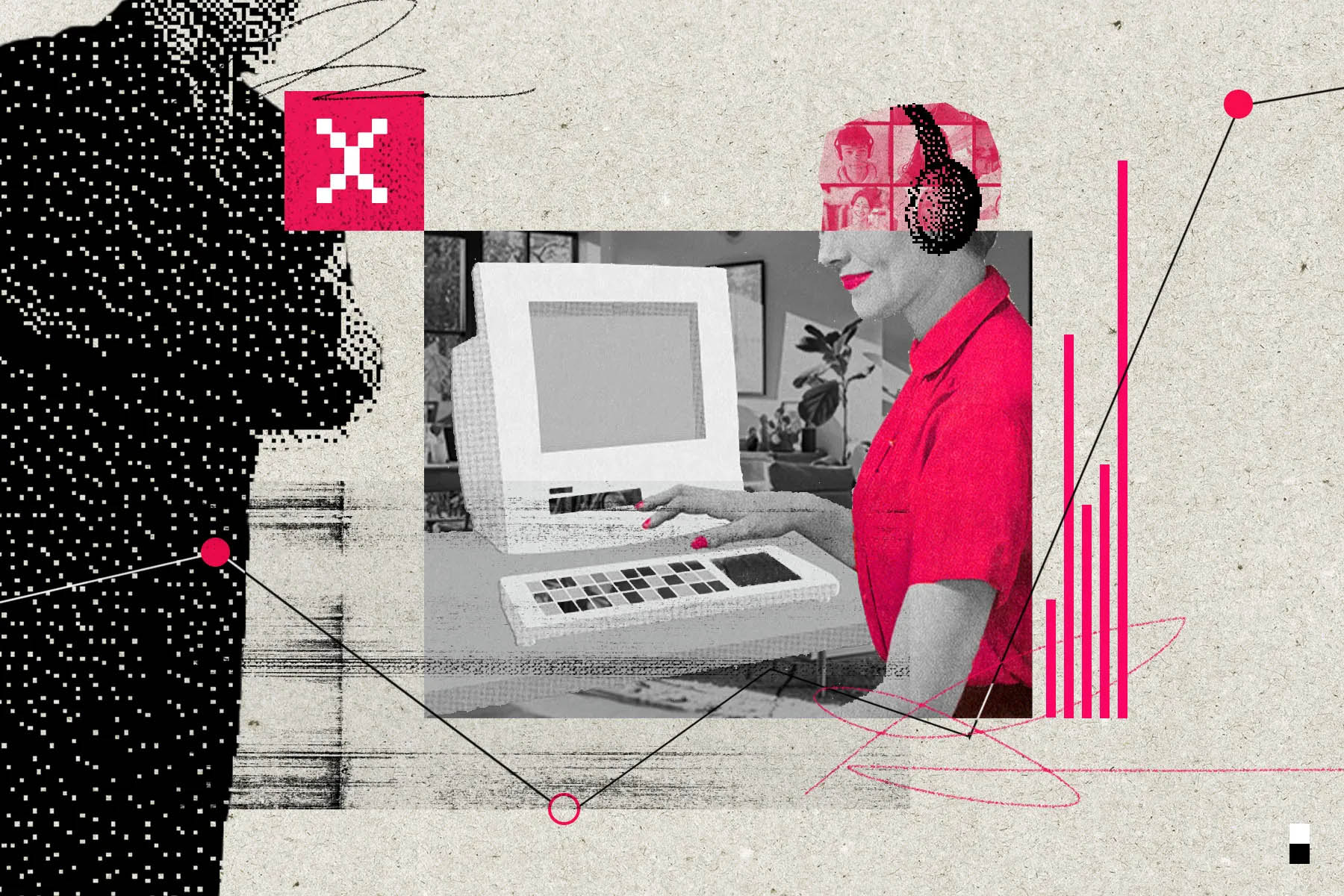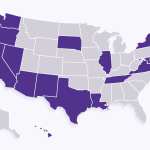Your trusted source for contextualizing America’s core issues. Sign up for our daily newsletter. Want to support this work? Donate today.
Leslie Pineda’s boss first told her he had feelings for her in early 2021, when she stayed late one night to finish a project.
As a person, he was gregarious, funny even. But he was a mercurial boss. If he wasn’t happy with her work as a senior graphic designer, she could expect a long lecture or knee-jerk feedback like, “This is kooky” and “I expect more from you.” He was also a talker, and he told everyone about his troubles with his wife. She’d listen because, she said, she didn’t mind it and because she thought it might make him go easier on her.
After Pineda told her boss she didn’t reciprocate his feelings, their relationship became even more odd. He’d joke about “running away together” and reprimand her and then say, “You know I have feelings for you, you could never be a disappointment for me.”
He also consistently continued to pressure her and the rest of the team to work in person. Pineda quit in August 2021, after he’d sent a long email questioning her for working remotely.
-
Explore Our 2023 Poll:
-
Explore Our 2023 Poll: The State of Our Nation
Now, as she’s taken time to process the sexual harassment she couldn’t even name then, Pineda has wondered how differently things could have gone if she’d had even some physical separation from her boss.
“He was such a micromanager that the thought of any of us working not in the office was such a difficult thing for him to deal with,” Pineda said. Remote work means you have to intentionally set meetings to talk, she said, “whereas when you’re in an office, it’s easy to talk about anything that might come up.”
In the three years since the pandemic reshuffled American workplaces, moving some of them from offices to homes, evidence is starting to show that virtual work could in fact be playing a role in reducing instances of sexual harassment.
According to a new 19th News/SurveyMonkey poll, across race and gender, remote workers were less likely than in-person workers to report experiences of sexual harassment or assault at work in the past three years. About 5 percent of women who were working remotely reported instances in that time, compared with 12 percent of in-person women workers. Overall, only 5 percent of remote workers reported instances in the past three years, compared with 9 percent of those who work fully or mostly in person.
Overall, about 20 percent of nonbinary workers reported instances of sexual harassment in the past three years, compared with 30 percent who experienced harassment pre-pandemic. There was not a large enough sample of remote nonbinary workers in the poll to make comparisons.
The poll was conducted online from August 24 to 31 among a national sample of 20,191 adults across age groups, gender identities, races and other characteristics — a larger group than many surveys conducted on sexual harassment in the past couple of years that shows a trend across different industries.
Lower reports of sexual harassment was true for remote workers in every category The 19th polled. For workers under the age of 35, the group most likely to be working in a remote setting, 8 percent of those working from home reported sexual harassment in the past three years. The share for in-person workers in that age group was 14 percent.
Daphne Delvaux, the founder of Delvaux Law, a firm dedicated to women's rights issues, said many sexual harassment cases that she handles are about the power dynamic at workplaces, where typically men in higher positions are leveraging those positions to abuse women.
But, she said, “it's really hard to assert your power when you’re all in a remote office setting.”
It’s also hard when those communications are more likely to take place on apps like Slack, where they can be archived or recorded. Most assault cases Delvaux has handled in the past decade have involved in-person work events — a lunch, a work party, a conference — when victims can be isolated without witnesses or opportunities for evidence, she said. Remote work has, simply put, reduced the number of opportunities for that to happen.
The changes in workplaces during the pandemic served as something of a proving ground: Delvaux said she saw a reduction in cases of sexual harassment in hospital settings when social distancing rules were put in place. “If we have men stay away from women, it actually creates more safety for them,” she said. Overall, women file about 80 percent of the sexual harassment cases reported to the Equal Employment Opportunity Commission (EEOC).
The number of sexual harassment cases filed with the EEOC jumped in 2018 following the rise of the #MeToo movement, which spotlighted the abuses happening regularly in American workplaces, and then dipped a little during the start of the pandemic before rising slightly in 2022, the most recent year of data available.
The other element at play with sexual harassment cases is that people can be targeted for their appearance. Working remotely can offer some insulation because workers have some control over how often they’re seen, something that can be particularly important for women of color and LGBTQ+ people, who often face different types of discrimination at once.
Black women, for example, are the most likely to report cases of sexual harassment in conjunction with racial discrimination, according to the EEOC’s data. In 2021, just 3 percent of Black professional workers reported wanting to return to the office full time, compared with 31 percent of White employees, in a poll conducted by research firm Future Forum.
Attorney Liz Morris, the deputy director of the Center for WorkLife Law, said that in cases of “race discrimination, a person’s physical appearance is very central and it makes sense on at least some level that you would be shielded if you are not in the worksite.”
But the potential protections remote work can provide are limited. Much of the software remote workers use doesn't have built-in reporting options to flag instances of abuse, and abusers can view those digital communications as private opportunities to abuse victims. Much of that harassment can still go undocumented. Abuse can also take other forms online, and companies are only just beginning to craft policies to protect workers in remote settings.
“Sexual harassment that is sexualized in nature can take place when you’ve never even met a person, virtually through comments, jokes, memes, videos,” Morris said. “Legally speaking there is sexual harassment that isn’t sexualized, which is really more about gender bias and actions that demean, exclude and other women that are unwelcome or threatening.”
But many workers don’t think of sexual harassment in that way, making it possible they’ll be less likely to report instances that don’t involve groping or touching, Morris said.
There are also enormous disparities in terms of who can work from home and tap into any of those potential protections.
Women of color dominate the jobs that can’t be done remotely: hospitality, retail, education and health care are among the industries with the least remote workers, according to a monthly survey by researchers at Stanford University. Women, and women of color especially, were also the most likely groups to be deemed “essential” during the pandemic, meaning they were required to continue working in person while other jobs moved remotely.
It also continues to be true that LGBTQ+ women and women with disabilities report experiencing sexual harassment or assault at work at higher rates. About 52 percent of LGBTQ+ women and 48 percent of women with disabilities have experienced sexual assault or harassment at work, according to the 19th News/SurveyMonkey poll.
White women and Latinas also reported sexual harassment at slightly higher rates — 40 percent and 32 percent, respectively — compared with 24 percent of Black women and 23 percent of Asian women.
Delvaux said she’s still seeing a significant number of cases in the fields of health care and education, jobs predominantly done by women of color.
“Women of color have definitely the most extreme cases always, and they put up with way more than anyone else,” Delvaux said. “Women of that demographic who are severely sexually harassed and exploited in different ways, the feedback if they would even dare to say something is, ‘You should feel lucky to have a job.’
“That hasn't really changed.”
More data helps us better cover and serve women, women of color and LGBTQ+ people. Here’s why we tackled this project — and how.







